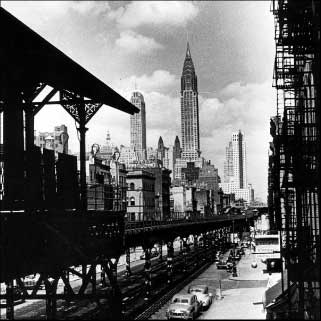

the Cold War, the City stipulated that the demolition contractor could not sell the salvaged metal to an “ironcurtain territory.”
Following the removal of the elevated tracks, a Third Avenue improvement project was undertaken with the intention of raising real estate values after the unsightly el was removed. The street was widened from 60 to 70 feet by reducing the size of the sidewalks from 20 to 15 feet. Modern fluorescent lights and new street signs were installed, and 1,200 London Plane trees were planted along the length of the avenue. At the time, many of the tenements that lined Third Avenue were being replaced with modern apartment buildings. One account of the improvement of Third Avenue referred to these buildings rising as "sharp-angled, bone white and haughty with expensive terrace suited fronting the Avenue in place of ugly steel." Third Avenue was the "Cinderella of New York Streets…risen from the rubble of what was once the street of dark despair."
With both elevated lines removed, Rose Hill and Kips Bay was served only by the IRT subway line that ran under Park Avenue South, several long blocks from the eastern part of the neighborhood. In 1968, the Metropolitan Transportation Authority (MTA) began plans for construction of a new subway line under in Second Avenue to replace the demolished Second and Third Avenue elevated lines.